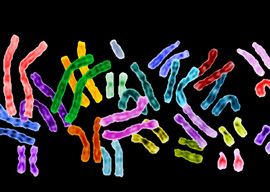
April 12, 2012

The tests give some broad ideas as to your overall ancestry using autosomal DNA. My results revealed something fairly obvious from my family history and the mirror: I’m a white guy whose ancestors are from Western Europe. I have no apparent African, Asian, or American Indian ancestry. I was hoping to know more fine detail, such as my percentage of German versus Celt à la Cavalli-Sforza, but the available online tests aren’t that specific and the research behind the tests is still underway. There are other tools available for the numerate, but they are not specific enough to classify a man as an Englishman versus a Scot. They do well at telling the difference between a Japanese and a Nigerian, however.
One of the more amusing results of the autosomal-DNA tests: I am allegedly 3% Neanderthal. I am in the 95th percentile of Neanderthality among human beings. If true, this makes every woman I have been involved with eerily prescient about my heritage. The results were available shortly after the research hit the newspapers, making it an exciting feature of the testing service, but there are reasons to be skeptical of the idea. Whatever the ultimate results of the Neanderthal hybridization hypothesis, folks who have had their genes sequenced will eventually know whether or not their ancestors were Neanderthals.
While I wax skeptical as to some of the results the commercial testing services yield, this work is very much in flux. These tests do get the broad strokes right. For people who have only vague ideas as to their ancestry, the results will be enlightening. The results can be very specific if you happen to have won the luck of the genetic draw and have a bloodline which is well-documented and studied.
Fairly crude algorithms present the commercial results, with copy written by people who don’t fully understand the methodology behind the results nor, for that matter, the subject itself. This situation will improve with time; the testing services have only been around for a few years. The open-source tools and databases for analyzing your genetic history are also improving. Hundreds of scientists are feverishly at work on this subject, and new results are published daily.
At some point, we’ll know things such as who comprised the Iron Age Hallstatt culture or who the Bronze Age Beaker people really were. We”ll also be able to pinpoint their modern descendants. More importantly, we as individuals will know where we fit into the historical tapestry. We’ll no longer be amorphously “white,” “black,” or “brown.” We will be able to see the lines of our people back to before recorded history.